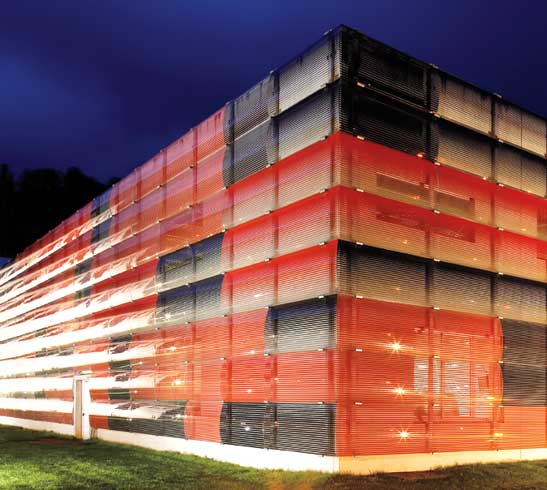It makes sense that a city with an average of more than 321 days of sunshine a year is taking the lead in solar, thanks in large part to the tireless efforts of the energy source’s biggest crusader in Arizona: the Greater Phoenix Economic Council (GPEC).
“I think if you look at comprehensively the way that we approach the utilization of solar, this is top-down the best market to do solar manufacturing,” says Chris Camacho, executive vice president of business development at GPEC.
GPEC aggressively pushed for passage of Senate Bill 1403, the Renewable Energy Tax Incentive Program, that was signed into law in 2009. The incentives include a refundable tax credit and a property tax reduction.
Since January 2010, eight companies have made the commitment to come to the Phoenix Metro area, with many more anticipated for the future.
GPEC’s hard work has led to making connections around the globe and attracting a number of high-level renewable energy companies to the Valley. One of these companies is Suntech Power Holdings, the world’s largest manufacturer of photovoltaic modules.
“Arizona can be very proud that it has GPEC as an ambassador for the region to reach out to global companies,” says Wei Tai Kwok, vice president of marketing at China-based Suntech Power Holdings. “They’re pounding the pavement to get the message out there that they want to be the solar capital.”
It was thanks to this commitment that Suntech decided to make Goodyear the location for the company’s first U.S. manufacturing plant.
“(GPEC) helped us with the financial modeling, business plan and follow-up,” Kwok says. “They were very attentive and committed to our success … and they’re still at our side and supportive of our needs.”
He also listed other important attributes that factored into the decision, including the state’s skilled work force and Arizona’s serious commitment to solar energy.
GPEC’s Camacho says that type of confidence and emphasis helps the organization differentiate itself from similar groups.
“GPEC’s brand as a group can provide the highest level of services to companies in analyzing the Western U.S. for business locations,” he adds.
The companies that have worked with GPEC can attest to its capability in assisting with relocation efforts. Rioglass Solar, a company that produces reflector components for solar thermal power plants and is a subsidiary of Rioglass Solar Holdings in Spain, worked with GPEC to establish a manufacturing facility and U.S. headquarters in Surprise.
“It was very helpful for us to have an organization that could get us the support we needed,” says Greg Armstrong, chief operating officer of Rioglass Solar. “You need a site that is constructible, has infrastructure and has a quality work force.”
Armstrong adds that the company is highly confident that due to the support of the local community, the infrastructure and GPEC, coming to Arizona will meet Rioglass Solar’s objectives.
Of course, one of the biggest benefits the expansion of the solar industry in Arizona will have will be on job creation. The more activity there is in the region, the more high-quality jobs will be available. The Suntech plant already has created 80 jobs and is expecting to increase to about 150 people within three or four years. Rioglass Solar also anticipates more than 100 positions at its Surprise facility.
While there has been plenty to celebrate since the passing of the incentive program, there are still hurdles to overcome. The catalysts for future growth of the solar industry in Arizona certainly are in place, but the economic difficulties have had an effect.
“We have seen corporations be very conservative in how quickly they move on investment decisions,” Camacho says. “We still have another 150 renewable energy companies in our pipeline. As the economy continues to recover, credit becomes more available, we will welcome more and more companies.”
It’s safe to say that Arizona is moving ahead in the sustainability industry — most notably in the solar field — and thanks to GPEC’s support, there are no signs of this industry slowing down.
“I look at sustainability alongside health care as one of the two industries that is going to drive our economic future,” Camacho says. “Without groups like GPEC, a lot of this would not exist, and I’ll attribute that to having our team be at the forefront of understanding these technology applications, understanding what drives the location decisions of CEOs, and creating an environment that’s very supportive of the (solar) industry.”




